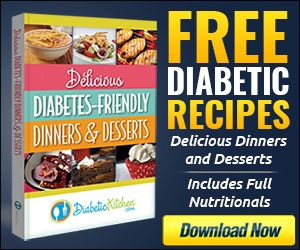Salt can be found everywhere in the average American’s diet. Most individuals consume way too much salt on a daily basis, so we’re taking a look at how to identify and avoid it.
Knowing which foods contain the most sodium (salt) is crucial when trying to reduce your intake. A recent study revealed the top 5 “saltiest foods” in the U.S. These foods are responsible for nearly 44% of the salt most people consume on a daily basis.
- Bread
- Pizza
- Sandwiches
- Cold cuts and cured meats
- Soup
It's not one single slice of bread that's incredibly high in sodium, but if you eat several slices a day, your total consumption adds up quickly.
Think about it- a piece of toast for breakfast, a ham sandwich and a bowl of soup for lunch, and two slices of pizza for dinner. It doesn’t sound like a ridiculous amount of unhealthy food, but you’ve consumed all of those top 5 saltiest foods in just one day!
Most people are thinking, “What about potato chips, pretzels, etc.?” Shockingly, potato chips and other salty snacks are not listed in the top five, (but they came close with a ranking of 7.)
Some of the other foods included in the saltiest foods list were bacon, condiments like salad dressing and ketchup, french fries, cereal, cheeses, frozen dinners, seasoning mixes, and sauces like barbeque and Worcestershire.
New research has found that Americans consume about 3,400 mg of salt daily. That’s more than double the American Heart Association's “ideal” intake of 1,500 mg daily.
A whopping 61% of the salt consumed daily in the U.S. comes from prepared foods and restaurant meals. The best way to reduce sodium is to avoid prepackaged, processed and prepared foods.
Sodium is an essential mineral that helps the body maintain fluid balance. Too much sodium in your system causes your body to retain water. This puts an extra burden on your heart and blood vessels. This can lead to high blood pressure. High blood pressure increases risk for heart attack and stroke.
Keep an eye on nutrition labels – they will tell you how much sodium is in the item you are buying. Foods with 140 mg or less sodium per serving are considered “low in sodium.” Other names for salt to watch for and avoid are: sodium chloride/NaCl, Monosodium glutamate (MSG), and Disodium phosphate.
Avoid adding extra salt to your recipes while cooking, and try eating without having a salt shaker on the table. Use fresh or dried herbs and spices to add flavor instead. Choose fresh, whole fruits and vegetables, and high quality meats. The fresher something is, the better it tastes on its own, and the less seasoning it needs!
Help cut back on your salt intake by planning your meals and cooking at home. Meal planning boasts many benefits. Firstly, you know exactly which recipes you are going to prepare and when, which saves the stress of putting together a meal on the fly. Also, you make one trip to the grocery store instead of multiple trips for an item or two here and there.
Thirdly, you save money in the store because you are only buying the ingredients that you need. You are also helping to reduce food waste because everything you buy has a specific purpose. Lastly, you save your health by cooking real food at home rather than getting dinner from a drive-thru or ordering delivery.
Just because you try to cook more often at home, reducing your sodium intake doesn’t mean giving up all of your meals out on the town. When dining out at a restaurant, try starting with a salad. Choose oil and vinegar for your dressing, or ask for your dressing on the side (you’ll use less!)
Don’t be afraid to tell your server that you want your meal prepared without salt. For example, if they put the same salty seasoning on every steak, ask for yours to be seasoned with pepper only, or with nothing at all. Don’t forget to mind your portions, as well. Put half of your meal in a to-go box and save it for later.
Like sugar, salt really is hiding everywhere. By consciously tracking your sodium intake, and working to reduce it, you can make a huge impact on your health.
Sources:
https://medlineplus.gov/news/fullstory_164370.html
https://www.heart.org/idc/groups/heart-public/@wcm/@hcm/documents/downloadable/ucm_300625.pdf


[…] Too much sodium in your system causes your body to retain water. This puts an extra burden on your heart and blood vessels. This can lead to high blood pressure which increases risk for heart attack and stroke. […]